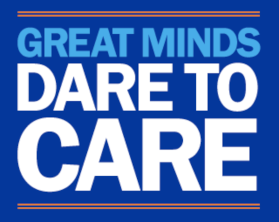
Understanding Suicide
SHU 24/7 Mental Health Crisis Hotline: 973-275-Help (4357)
Call or text 988 to contact the Suicide and Crisis Lifeline or chat online at 988lifeline.org.
Or text Talk to 741-741 for the Crisis Text Line.
If you are in immediate danger, call 911.
Suicide is the 12th leading cause of death in the US. In 2020, 45,979 Americans died by suicide and millions of family members and friends were impacted by each of those deaths. The question that is asked most often is “Why?” Why would someone choose to end their life? There is no simple answer or a single reason. The American Foundation for Suicide Prevention has learned the following about suicide in their years of research:
- Suicide is connected to brain functions that affect decision-making and behavioral control, making it difficult to find positive solutions to problems.
- Limiting a person’s access to lethal means or items that can be used for self-harm dramatically decreases suicide rates.
- 90% of people who die by suicide have an underlying mental health condition that is potentially treatable.
- People with depression, bipolar disorder or a substance use disorder are at higher risk for suicidal thinking and behavior.
- Cognitive Behavior Therapy-SP and Dialectical Behavior Therapy are proven therapies to help people manage their suicidal ideation and behavior.
- Life stress combined with other risk factors, such as trauma, substance use, chronic pain can play a role in suicide. Nobody takes their life for one single reason.
- Asking someone directly if they’re thinking about suicide won’t “put the idea in their head.” Many people will be relieved that someone started a conversation.
- Certain medications that are used to treat depression or stabilize mood have been proven to help people reduce suicidal thoughts and behavior.
- If someone can get through the intense, and short, moment of active suicidal crisis, chances are they will not die by suicide
- 85% to 95% of people who survive a suicide attempt go on to engage in life.
Adapted from The American Foundation for Suicide Prevention
Risk Factors
The American Foundation for Suicide Prevention outlines the following risk factors for suicide.
Health
- Mental health conditions:
- Depression
- Substance use problems
- Bipolar disorder
- Schizophrenia
- Personality traits of aggression, mood changes and poor relationships
- Conduct disorder
- Anxiety disorders
- Serious physical health conditions including pain
- Traumatic brain injury
Environmental
- Access to lethal means including firearms and drugs
- Prolonged stress, such as harassment, bullying, relationship problems or unemployment
- Stressful life events, like rejection, divorce, financial crisis, other life transitions or loss
- Exposure to another person’s suicide, or to graphic or sensationalized accounts of suicide
Historical
- Previous suicide attempts
- Family history of suicide
- Childhood abuse, neglect or trauma


